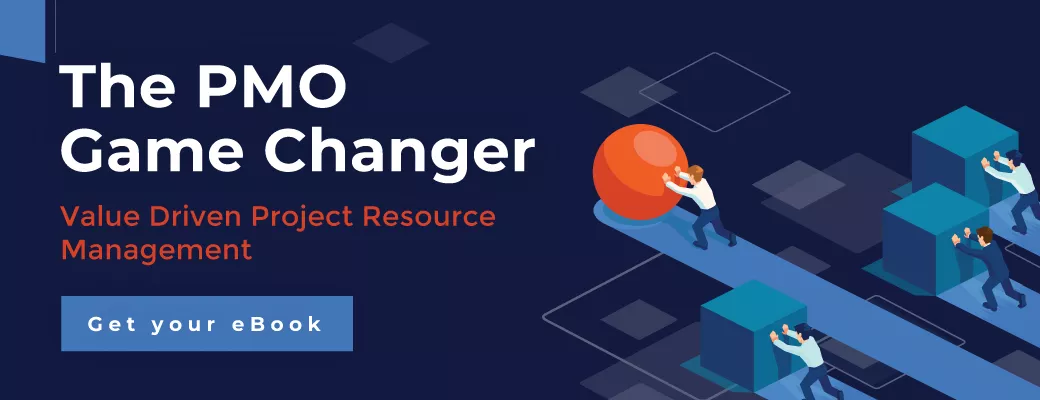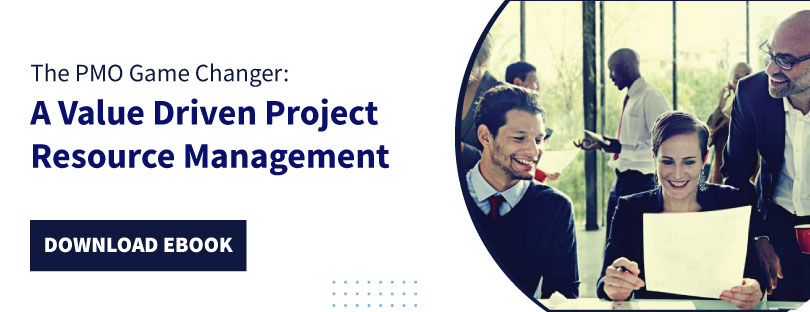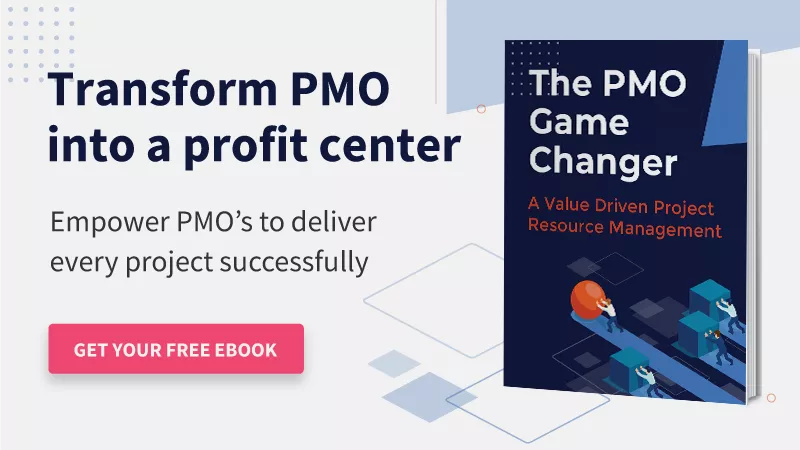Business magnate Bill Gates rightly quoted, “Information Technology and business are becoming inextricably interwoven. I don’t think anybody can talk meaningfully about one without talking about the other.”
This interdependence of technology and business couldn’t be explained better. An organization’s efficiency highly relies on its ability to choose the right tool within the industry. Most of the firms are diversifying and extending their reach across geographical boundaries. Therefore, it has been critical to standardize processes, methods, and tools across different subsidiaries.
A study by PMI revealed that 66% of companies using project management software, complete their projects within their original budget.
One such tool that has made PMO’s and project manager’s lives simpler is project portfolio management (PPM) software. It facilitates hassle-free management of multiple projects at once. From forming a structured project selection criteria to keeping a tab on every project’s and resource’s KPIs, the tool covers it all.
However, one has to be highly diligent and mindful of the organization’s strategic purpose before selecting this tool. There is no ‘one-size-fits-all solution when it comes to solving business concerns. Every firm is unique in terms of its goals, objectives, and needs. Thus, it is of utmost importance for decision-makers to evaluate each tool before putting in the money carefully.
This article takes you through the evaluation criteria you can follow to buy the right PPM tool for your firm.
Starting with the basics,
The purpose and benefits of the PPM Tool
Every project taken up by the firm contributes towards reaching the strategic goals and increasing the profit margins. Thus, it is crucial to assess the project and its impact on the bottom line meticulously before making any investment. However, it’s not easy to do so without a systematic approach when your firm caters to multi-faceted projects.
A PPM tool allows PMOs and project managers to formulate a definite project selection criterion that ascertains no parameter is overlooked. The enterprise-wide visibility feature of the tool gives a glimpse of this to every stakeholder in real-time.
Once there is a consensus to go ahead with it, the next step is project planning. With a birds-eye view of all the projects, managers can prioritize them based on their criticality, deadlines, and other factors that seem appropriate. Using the PPM tool, they can form a work breakdown structure for the high-priority projects, identify and schedule the competent resources, and get a headstart.
Project planning and initiation are only half the battle won. To steer the projects through success, managers have to monitor and control their progress constantly. The PPM tool has dedicated modules for effective financial, resource, and risk management, enabling them to stay updated on all project and resource KPIs. Using this data, managers can plan the right course of action and stay ahead of the curve.
In addition to these benefits, a PPM tool also provides uninterrupted collaboration to strengthen the team and bridge the communication gap within the matrix boundaries. Overall, a PPM tool is an inventory of the right solutions to streamline the management of several projects under one roof.
Out of these modules, resource management plays a vital role in deciding the project’s course. That’s because the workforce and their competencies bring your project to fruition.
Now let us discuss why having a resource management function in the PPM tool is necessary,
The purpose of resource management in the PPM tool
Every project is subdivided into several stages, which are further broken down into small tasks. Each task demands a niche skillset for its appropriate execution. Once managers procure adequate resources, they are scheduled based on their availability.
The workforce has specific charge out and costs rate, and if not utilized efficiently, it can elevate the project budget eating up the revenue. Furthermore, poor performance or low productivity can even delay the project timeline. Thus, to stay on track with the project plan, it is of utmost importance for supervisors to manage the resources smartly.
Apart from the impact on the project’s lifecycle, sub-optimal utilization, incompetent allocation, and other resource-centric errors can deteriorate the resource health index leading to unplanned attrition. Even one discrepancy can restrict the entire project’s progress. Resource management resolves all these employee-centric challenges and keeps the project in line with the plan. This is why it is a non-negotiable module of the PPM tool.
Read More: Resource Management: A Comprehensive Handbook for Project Managers
Keeping these basics in mind, it’s time to dive deep into the intricacies of evaluation criteria,
The evaluation criteria of a PPM tool
Although every organization is distinct, the PPM tool they eye for should have certain functionalities that combat the common portfolio management challenges. Below is the rundown of some necessary features you should look for before putting your financial reserve into it,
A centralized platform to manage individual projects
First and foremost, the tool should be able to replace the disparate tools and their siloed data. It should bring every project and its details on one single platform.
A unified version of truth allows managers and stakeholders to overview any project and its progress instantly. Moreover, a centralized depot of data eliminates internal conflicts and keeps the team on the same page.
Resource management solution
The role of resource management in PPM has been discussed in the previous section. To add to that, managers must ascertain that the PPM tool has a standalone solution that will allow them to manage the resources intelligently. It should have advanced features that update the data entered by resources in real-time.
The holistic view of future resource demand and capacity will enable managers to implement appropriate resourcing treatments to bridge the gap in advance. With a multidimensional view of resource schedules, managers will be able to form balanced workloads. Along with that, an organized view of projects will also let them book the critical resources to high-priority projects first.
Moreover, the advanced filters will let you identify and allocate the right resource to the right task at the right cost and time. This, in turn, will ensure the timely delivery of projects while maintaining productivity and quality.
Read More: Top Ten Business Benefits of Resource Management
Financial management
Finishing and delivering the project within budget is one of the deciding factors of the project’s success. If one project is over the budget, it will not leave enough room to control the scope. Thus, the onus is on managers to regulate and control the finances throughout the project’s life cycle.
A tool should be able to give real-time insights into forecast vs. actual costs. It will allow managers to draw a comparison between the planned budget and present expense.
In case there is a deviation, managers will be able to control the costs before it’s too late. Another factor to be considered while managing the project finances is hiring or deploying cost-effective global resources. With 360-degree visibility of the enterprise-wide resource pool, the decision-makers will assess the cost of similarly skilled resources in different locations. It will help form the right mix and curb the costs while maintaining the quality at par.
Risk analysis
It is natural to expect some uncertainties during the lifecycle of a project. Mitigating these risks requires a definitive framework in place long before the risk surfaces. Besides, if one project has potentially multiple risks, managers can take a go or no-go decision based on the impact of these risks.
Naturally, it is not easy to manually assess each risk factor. To err is human. Having a tool in place will prevent room for guesstimations and make space for accurate data-driven insights. A PPM tool should provide a dedicated channel to analyze and categorize these risks based on their severity and probability.
Following a well-structured risk management framework, managers can form a backup plan for the most probable and critical risks and tackle them head-on.
Read More: Understand 10 Benefits of an Effective Project Portfolio Management Strategy
Real-time tracking to evaluate progress
The whole purpose of buying a tool is to bring the dispersed teams together and keep everyone informed of every project metric. It eliminates discrepancies, double-bookings and also allows managers to keep a tab on the project’s performance and employee productivity at any time.
Thus, a tool should have real-time tracking that will allow managers to gauge the progress and take remedial measures in case of any deviations. It includes the project metrics viz. finances and timelines, resource metrics like utilization, bench reports, etc.
Forecast vs. actuals to maintain the project’s health
Supposedly, you have scheduled a resource for a task for 15 days. However, he/she takes 30 days to finish the same task, which will have a domino effect on the consecutive tasks. At the same time, if the resource is to begin the next project after the end of this task, it will delay that too.
To keep a hold of such situations, one should select a tool that provides real-time forecast vs. actual reports on project costs, resource utilization, and revenue. These reports act as an alarm for project managers who then have enough leeway to protect the project’s fate in time.
Read More: What is Resource Forecasting? An Ultimate Guide for Project Managers
Scalable, integrable, and configurable to meet the business needs
Needless to say, every organization aims to scale up its business operation. In this case, the tool they deploy should accommodate the added number of projects or resources into the database. In simple words, the tool you look for should be scalable to attune your future business expansion plan. It should also seamlessly integrate data from other business applications you are using to avoid double-entry and manual errors.
Every business is different and handles a diverse set of projects. For example, if you are a marketing firm, your tool will have different roles, projects, or departments. In the same way, an accounting firm will follow a different organizational structure. Thus, to ensure that you and your workforce do not face a challenge while operating these tools, invest in the one that is easily customizable and configurable.
Collaborative platform to keep everyone on the same page
If you are working in a matrix organization or a shared-services model, or if your firm is operating virtually, then sharing files and essential documents instantly with your team needs proper planning. Often we miss out on important information amid tight deadlines.
Thus a tool with an in-built collaborative platform will promote effortless inter-departmental collaboration in real-time. If you are working on two projects simultaneously, it will allow you to form different channels or groups with the specific team and share the data with the concerned members. It will keep the information in one place and save the additional cost of an external collaboration tool.
These are some of the features one should look for within a PPM tool to reap all the benefits and solve the significant portfolio management challenges.
Read More: 11 Ways to Improve Cross-Departmental Collaboration
Additionally, you can leverage these tips to enhance the selection process further,
Tips for selecting the right tool for your firm
Evaluate your firm’s strategic goal
Every process, every project you undertake, and even the tool you invest in should align with the strategic goal of your firm. For instance, if your long-term strategic plan is to form a well-defined PMO and deliver business value, invest in a PMO-centric tool. Investing in a solution that does not support the PMO functions will then be a futile investment.
What are the current challenges you face?
The first purpose while buying a tool should be to tackle the current challenges rather than availing of the other luring benefits.
If you cannot manage the resources well between multiple projects, investing in a robust solution helps.
It’s always recommended to evaluate and analyze the current difficulties faced by the organization.
Assess every feature before selecting the tool
A tool has multiple layers of functions in it. Managers should attend demos, get a hands-on experience of the tool, and explore every tiny feature before giving it a go. If your tool has a resource scheduling feature but does not have a color-coded utilization heatmap, then it’s incomplete information. It’s better to know this before you buy the licenses as it will cost you a hefty amount but will only solve half the purpose.
Make the final selection based on ROI
Any tool or software for a project you invest in should provide a substantial return on investment. The features of the tool along with its associated cost between different vendors need to be compared to arrive at the right decision. The PPM tool you select should at least help you minimize resourcing costs by a significant margin along with its features.
At the same time, one should be able to recover the cost incurred by the software from the savings within a minimum amount of time (Payback period). Thus, the final decision should be based on the ROI which can be calculated by doing a cost-benefit analysis between several options.
Read More: How to Select the Best Resource Management Solution for your Business
Conclusion
A project portfolio management tool is an incumbent solution for firms handling diverse projects. Thus, it is imperative to select the right solution that caters to every function of effective portfolio management. Given the immense importance of resource management in PPM, the decision-makers must ensure that the tool encompasses a robust solution that evaluates all resource metrics in real-time.
The evaluation criteria mentioned above are a definitive guide for PMOs and project managers looking for an ideal PPM tool.
How do you evaluate the business management tools?
The Glossary
Read More: Glossary of Resource Workforce Planning, Scheduling and Management
The SAVIOM Solution
SAVIOM is the market leader in providing robust and configurable solutions to manage your resources effectively. With over 20 years of experience leading the market, Saviom is actively used by over 15 highly-esteemed global companies worldwide. The tools within the suite include project portfolio management, professional service automation, and workforce planning software. It also entails supporting solutions to schedule equipment and assets seamlessly. Re-engineer operational efficiency with a system shaped around your business!













